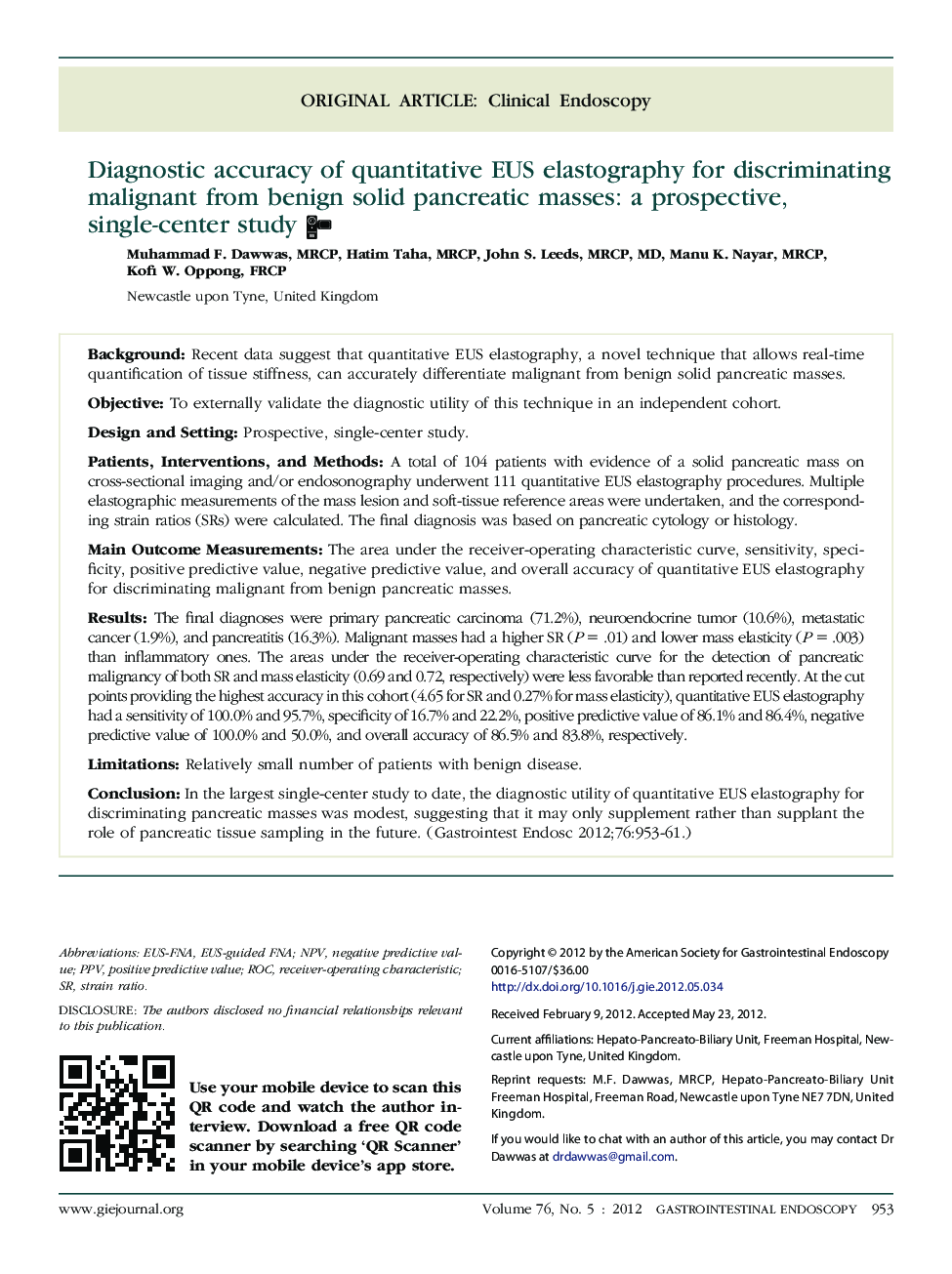| کد مقاله | کد نشریه | سال انتشار | مقاله انگلیسی | نسخه تمام متن |
|---|---|---|---|---|
| 6098211 | 1210332 | 2012 | 9 صفحه PDF | دانلود رایگان |

BackgroundRecent data suggest that quantitative EUS elastography, a novel technique that allows real-time quantification of tissue stiffness, can accurately differentiate malignant from benign solid pancreatic masses.ObjectiveTo externally validate the diagnostic utility of this technique in an independent cohort.Design and SettingProspective, single-center study.Patients, Interventions, and MethodsA total of 104 patients with evidence of a solid pancreatic mass on cross-sectional imaging and/or endosonography underwent 111 quantitative EUS elastography procedures. Multiple elastographic measurements of the mass lesion and soft-tissue reference areas were undertaken, and the corresponding strain ratios (SRs) were calculated. The final diagnosis was based on pancreatic cytology or histology.Main Outcome MeasurementsThe area under the receiver-operating characteristic curve, sensitivity, specificity, positive predictive value, negative predictive value, and overall accuracy of quantitative EUS elastography for discriminating malignant from benign pancreatic masses.ResultsThe final diagnoses were primary pancreatic carcinoma (71.2%), neuroendocrine tumor (10.6%), metastatic cancer (1.9%), and pancreatitis (16.3%). Malignant masses had a higher SR (P = .01) and lower mass elasticity (P = .003) than inflammatory ones. The areas under the receiver-operating characteristic curve for the detection of pancreatic malignancy of both SR and mass elasticity (0.69 and 0.72, respectively) were less favorable than reported recently. At the cut points providing the highest accuracy in this cohort (4.65 for SR and 0.27% for mass elasticity), quantitative EUS elastography had a sensitivity of 100.0% and 95.7%, specificity of 16.7% and 22.2%, positive predictive value of 86.1% and 86.4%, negative predictive value of 100.0% and 50.0%, and overall accuracy of 86.5% and 83.8%, respectively.LimitationsRelatively small number of patients with benign disease.ConclusionIn the largest single-center study to date, the diagnostic utility of quantitative EUS elastography for discriminating pancreatic masses was modest, suggesting that it may only supplement rather than supplant the role of pancreatic tissue sampling in the future.
Journal: Gastrointestinal Endoscopy - Volume 76, Issue 5, November 2012, Pages 953-961